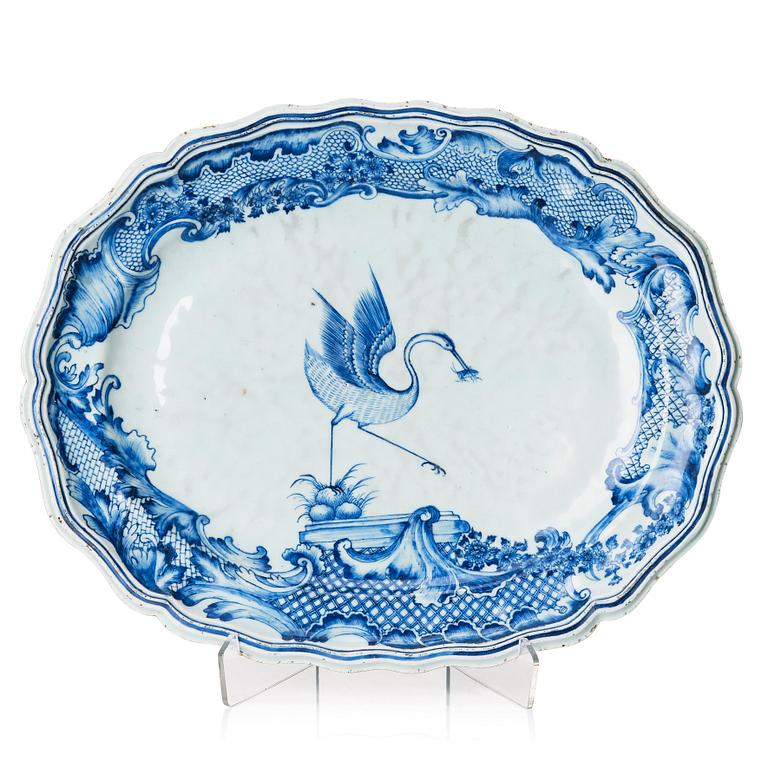A blue and white 'armorial' dish for the Swedish family 'Grill', Qing dynasty, Qianlong (1736-95).
Oval, after a european silver shape, decorated with a crane with a cricket in his beak. Length 45 cm.
Restored. Wear. Fritting to rim.
Provenance
The Grill family was one of the most powerful in Sweden during the 18th Century. Many family members were involved in the Swedish East India Company. Claes Grill was for example director of the Swedish East-India Company, owner of Sweden’s leading merchant house Claes & Carolos Grill, their trade involved shipping, co-owner of a sail and linen manufactory, glassworks, shipyards, a bank and he owned a line of mines and estates. This service might have been comissioned by Jean Abraham Grill who were the administrative assistant for many years in Canton. He might have comissioned it for his father Abraham Grill, also a Director of the Swedish East India Company. The Grill family derives from a Dutch noble family and was not introduced in Sweden. They used the crane with a cricket in its beak as their coat of arms.
Literature
Cleive Hornstrand, The Family Grill East Indian Porcelain, page 100-110.






































